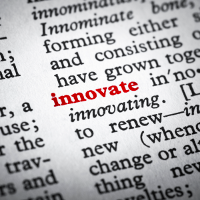 By Kevin Madigan & Adam Mossoff
By Kevin Madigan & Adam Mossoff
As the world prepares for the game-changing transition to 5G wireless systems, the high-tech industry must continue to efficiently develop and implement technologies and networks that work together across different platforms and devices. Few people are aware of how this happens, because it occurs solely between the companies who develop and implement technological products and services in the marketplace, such as Qualcomm, InterDigital, Microsoft, Apple, and others. These companies participate in private standard setting organizations, which develop technological standards agreed upon by these companies, such as three-prong electrical plugs, USB drives, hard disk storage drives, and even communications technologies such as Wi-Fi and 2G, 3G, and 4G.
In sum, the development of standards is a key part of how new technological innovations are efficiently sold and used by consumers and work for everyone. The reason standard setting organizations came into existence is because the alternative is neither efficient nor good for consumers. A standards “war” between companies in the marketplace leads to years of incompatible devices being sold while consumers wait for one company to establish (private) market dominance with its products and services such that everyone else must use that standard, such as what happened between VHS and Betamax in the 1980s or the market fight between Blu-ray Disc and HD DVD in the 1990s, to name just two examples. Standard setting organizations preempt this unnecessary and wasteful commercial war by bringing together the innovators and implementers of new technology to agree beforehand on a standard so that new standardized products and services can get into the hands of consumers faster.
Unfortunately, some standard setting organizations are changing their rules for the companies that invest hundreds of millions of dollars in long-term R&D to create groundbreaking technologies like those used in our smartphones. These new rules create uncertainty for these innovators. As a result, this uncertainty is threatening investments in new high-tech products and the ongoing growth in the U.S. innovation economy.
Detailing this troubling trend is a recently released, in-depth, and rigorous study by Kirti Gupta and Georgios Effraimidis, which tracks the changes in the rules for the creators and owners of the technologies incorporated into technological standards by one of the largest and more influential organizations—the Institute of Electrical and Electronics Engineers-Standards Association (IEEE). In 2015, the IEEE adopted a new policy governing how owners of patents on technologies incorporated into its technological standards can protect and secure their investments via their legal rights to their patents. This shift in policy required patent owners effectively to relinquish their legal right to stop deliberate and unauthorized uses of their property and thus made it harder for them to license reasonable royalties for the use of their technology equally among all industry stakeholders.
As Gupta and Effraimidis show through detailed analyses, the IEEE’s new policy has distorted the longstanding market processes and licensing negotiations that have led to billions of smartphones being sold to consumers at relatively low cost around the world over the past decade. This is a vitally important study, because it brings key data to the policy discussions about technological standards, patents, and the incredible products and services made possible by them and on which everyone relies on today.
A Quick Summary of Standard Setting Organizations and Patented Technologies
A traditional requirement of the IEEE and several other standard setting organizations is that innovators commit to license equally their patented technologies that are incorporated into an agreed-upon standard for all companies implementing this standard in products and services. The law already provides that a patent owner will receive a “reasonable royalty” as damages for any past unauthorized uses of a patented technology, and thus standard setting organizations added the contractual requirement that this reasonable royalty also be non-discriminatory. To create a pleasant-sounding acronym, the phrase used is that licensing rates for patented technologies incorporated into market standards must be fair, reasonable, and non-discriminatory (FRAND). The goal of FRAND is to ensure that all companies creating products and services that are sold to consumers in the marketplace pay the same rates for incorporating the necessary standardized technologies into these products and services, such as the standardized 4G transmission technology used by everyone’s smartphones.
About a decade ago, some professors and lawyers posited a theory based on an abstract, economic model that owners of patents on technologies incorporated into these standards could exploit their ability to seek injunctions for violations of their patents and thus impose unduly higher costs on the companies implementing these standards in things like smartphones, laptop computers, tablets, and other devices and services. It was a simple story about property owners “holding up” people who wished to use their technologies, cashing in on the ubiquitous knowledge that any property owner can post a sign that says “no trespassing.” Based on this “patent holdup” theory, which deduced from an abstract model that patent owners would demand inordinately high royalties from the companies that need to incorporate agreed-upon technological standards into their products and services, these academics argued for “reforms” in the law to stop “patent holdup.”
But the “patent holdup” theory is just that—a theory. More than a decade of rigorous empirical studies have not only failed to confirm the “patent holdup” hypothesis of systemic market failures in the patent-intensive high-tech industry, and instead have found market conditions that directly contradict the core claim of “patent holdup” theory (see here for a letter to Assistant Attorney General Makan Delrahim summarizing this research and listing many of the studies). One study has shown that the average royalty rate for key technologies used in smartphones is only 3.4%, which is contrary to the 67% royalty rate predicted by “patent holdup” theory. Another study, among others, found significant quality-adjusted drops in consumer prices of smartphones and increasing entry of new manufacturers of smartphones, as well as other market conditions in the smartphone industry, that directly contradict the predictions of “patent hold” theory.
Unfortunately, in response to lobbying and the successful pushing of the “broken patent system” narrative in Washington, D.C., antitrust regulators forged ahead at the DOJ to push for policy changes at standard setting organizations on the basis of this unproven “patent holdup” theory. (Thankfully, recent antitrust regulators have returned back to evidence-based, balanced policy-making.) Several years after the first article propounding the “patent holdup” theory was published in 2007, implementers began pushing this theory at the IEEE to effect changes in its internal patent policy, which ultimately responded to this effort by revising its patent policy in 2015.
IEEE Policy Changes for Owners of Patents on Technological Standards
As Gupta and Effraimidis explain, the IEEE’s new patent policy has been highly controversial and generated much discussion among academics and industry practitioners. Separate from what they disclose in their article, there have been allegations that the internal process at the IEEE in changing its patent policy was initially cloaked in secrecy and was not open to all IEEE members as to when meetings were held and as to what the substantive decision-making processes were at these meetings. One commentator referred to it politely as an “opaque decision-making process” by the IEEE. If true, this is very troubling given that this violates the exemption accorded to the IEEE under the antitrust laws for operating as a standards setting organization.
Essentially, the IEEE patent policy was changed in 2015 in two key ways that impacted innovators. First, the new policy prohibits a patent owner seeking an injunction until all efforts at obtaining a license fee have been exhausted, including suing and litigating to a final judicial decision awarding a reasonable royalty. This of course incentives purported licensors to drag out licensing negotiations while they are infringing the patent, imposing large costs on patent owners in having to file lawsuits and pursue their legal remedies in court for many years and who have no choice but to allow the unauthorized use of their property during this time.
Extending these negotiations then allows licensors to take advantage of the second major rule change by the IEEE in its patent policy: the policy shifts licensing rates from the longstanding, market-based licensing of the technology given the value of the consumer device to the component level of the value of the chip itself. Of course, a smartphone without 4G or Wi-Fi is a beautiful 1995 cell phone with a very pretty, colorful screen and nothing more, which is why the free market settled on the value added to the entire smartphone for the basis of the licensing rate for this standardized technology. Moreover, calculating royalty rates based on the very cheap computer chips that contain the valuable technology fails to account for the hundreds of millions of dollars in R&D investments in developing the technology in the first place. Again, this is why the arrangement first reached in the free market between innovators and implementers was a balanced approach in device-level licensing rates that accounted for the costs of R&D and the costs of manufacturing the smartphones that contained the technology derived from this R&D. As a recent empirical study has shown, this is approximately 3.4% per smartphone, which is anything but an example of a massive payment to patent owners on 4G or Wi-Fi, especially for these core technologies that make a cell phone a “smartphone.”
Why then did IEEE change its patent policy? Consistent with the concerns about the “opaque decision-making process” at the IEEE, economist Greg Sidak has identified how the new rules were drafted by an ad hoc committee at the IEEE dominated almost entirely by implementers who license the patented technologies from the innovators who develop and contribute these technologies to the standard-setting process. In effect, the licensees strategically dominated the process and used their clout to push through a policy change that devalued the patented technologies, because they were seeking to lower their own manufacturing costs in implementing this technology in the consumer products and services they manufacture and sell in the marketplace. As evidence, Sidak shows that comments submitted in opposition to the new rules were rejected at nearly double the rate of those in support, reflecting a process that betrayed the IEEE’s core principles of openness, consensus, and the right to appeal. Instead of alleviating any alleged problems caused by patent owners, the IEEE’s rule changes actually facilitated collusion among implementers and resulted in “buyer-side price-fixing” of the patented technologies.
Negative Impact on Contributions of New Technology to Standards at the IEEE
The heart of the Gupta and Effraimidis article is not the theoretical and empirical background to the “patent holdup” dispute, but a detailed empirical study of the impact the new IEEE patent policy has had on the standard development process. Focusing on IP-intensive standards related to the development of Wi-Fi and Ethernet networks, the study first looks into the number of Letters of Assurances (LoAs) submitted to the IEEE in the years before and after the patent policy change took effect.
(LoAs are documents submitted by inventing companies who contribute new technological innovation in the standard-setting process. These technology contributors have patents on these innovations, and in these LoAs, they identify what patents may be essential to the standard that is being developed and they identify the terms under which they’re willing to license this technology if it ends up being incorporated into the standard that is ultimately set by the standard setting organization. An LoA is labeled “positive” if the contributor agrees to license its technology under the patent policy set by the standard setting organization or “negative” if the contributor declines to commit to these terms.)
The Gupta and Effraimidis study found that the number of positive LoA submissions has dropped a whopping 91% since IEEE changed its patent policy in 2015 and the number of negative LoAs rose to an all-time high in 2016. Gupta and Effraimidis explain:
The results suggest that many [patent] owners are reluctant to license their patent portfolio on the new FRAND terms. More importantly, the uncertainty on implementers’ side has increased, as new standards . . . have been approved despite the presence of negative and/or missing LoAs . . . .
Their article also tracks changes in the duration of the comments period that takes place before a new standard is approved—this is the period of time during which IEEE members discuss, debate, and resolve any concerns about a standardized technology before it is ultimately adopted as an official standard by the IEEE. Before the IEEE’s new patent policy went into effect in 2015, the average duration of the first two rounds of comments was 233 days. After the new patent policy took effect, Gupta & Effraimidis found a 42.5% increase in the comment period duration, resulting in an average resolution time of 332 days. This increase by almost half in the standard-setting process, especially in an industry marked by rapid development of new smartphones, laptops, and other high-tech consumer products and services, is concerning, to say the least. These delays are wasting private as well as public resources and impeding the commercial development of important IP-intensive technologies.
Finally, the Gupta and Effraimidis study analyzes the change in the number documents submitted at the IEEE that trigger the development of a new standard technology, which is a proxy for the development of new standards by the IEEE. Here, Gupta and Effraimidis’ findings contradict another recent study that alleged a high number of submissions in 2016 reflected a positive impact of the IEEE’s new patent policy. Gupta and Effraimidis reveal that hundreds of the submissions counted in the prior study either came from standards for which no patented inventions were contributed or were for standards of little or no value. Focusing properly on submissions for technologies that have significant value and produce an overwhelming majority of IEEE standards, they find submissions of new standards documents have in fact declined by 16% since 2015.
In sum, the changes in the internal standard-setting process at the IEEE since it adopted its new patent policy in 2015 represent a concerning shift following a strategic and collusive effort by implementers to devalue the patented technology created by innovators and contributed to standard setting organizations like the IEEE. The evidence is slowly building, showing that the IEEE’s new patent policy has devalued the innovative activity of technological innovators based on a purely theoretical and unproven claim that there is a systemic problem with so-called “patent holdup” in the smartphone and other high-tech industries. Unfortunately, in leaping into action on the basis of unproven theories, the IEEE has contributed to pervasive uncertainty and weakened incentives in the development and commercial implementation of innovative technologies, as is increasingly being documented and discussed by legal scholars and economists.
Moving Forward
The Gupta and Effraimidis study analyzes for the first time empirical data in fully detailing the effects of the IEEE’s new patent policy on the standard setting process. Their study shows that innovators are unwilling to continue to contribute the technologies they develop to the standard setting process under onerous terms requiring them effectively to give up their legal rights to their patents, and that these policies are having a perverse effect in creating inefficient licensing negotiations and delayed standards development. Their findings may sound intuitive to patent lawyers and innovators, but it is imperative to bring data into the public policy debates after ten years of concerted efforts to implement unproven theories, such as “patent holdup” theory, in both law and in the policies of private organizations like IEEE.
Gupta and Effraimidis conclude that a proper patent policy for a standard setting organization like the IEEE “should enhance incentives of technology contributors to innovate, while ensuring unlimited access to the new technology standards.” In considering its key role as a long-time professional association for the high-tech industry reaching back to Nikola Tesla and Thomas Edison, as well as its key role as standard setting organization in the innovation economy, the IEEE hopefully will reconsider its patent policy in light of actual economic and legal evidence. It should return back to the balanced patent policy that successfully promoted the computer and mobile revolutions of the past four decades. The future of new and innovative consumer products is at stake, such as the 5G technology that was first being developed many years ago and will start to be introduced into consumer products in the coming year.
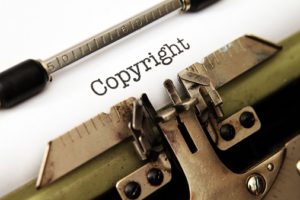 The U.S. Copyright Office released its long-awaited report on Section 512 of Title 17 late last week. The Report is the culmination of more than four years of study by the Office of the safe harbor provisions for online service provider (OSP) liability in the Digital Millennium Copyright Act of 1998 (DMCA). Fortuitously, the study period coincided with the launch of Scalia Law’s Arts and Entertainment Advocacy Clinic. Clinic students were able to participate in all phases of the study, including filing comments on behalf of artists and CPIP scholars, testifying at roundtable proceedings on both coasts, and conducting a study of how OSPs respond to takedown notices filed on behalf of different types of artists. The Office cites the filings and comments of Scalia Law students numerous times and ultimately adopts the legal interpretation of the law advocated by the CPIP scholars.
The U.S. Copyright Office released its long-awaited report on Section 512 of Title 17 late last week. The Report is the culmination of more than four years of study by the Office of the safe harbor provisions for online service provider (OSP) liability in the Digital Millennium Copyright Act of 1998 (DMCA). Fortuitously, the study period coincided with the launch of Scalia Law’s Arts and Entertainment Advocacy Clinic. Clinic students were able to participate in all phases of the study, including filing comments on behalf of artists and CPIP scholars, testifying at roundtable proceedings on both coasts, and conducting a study of how OSPs respond to takedown notices filed on behalf of different types of artists. The Office cites the filings and comments of Scalia Law students numerous times and ultimately adopts the legal interpretation of the law advocated by the CPIP scholars.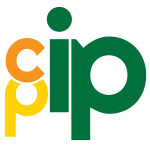 Longtime CPIP staff member Kevin Madigan is leaving the Center next week to become VP, Legal Policy and Copyright Counsel at the Copyright Alliance.
Longtime CPIP staff member Kevin Madigan is leaving the Center next week to become VP, Legal Policy and Copyright Counsel at the Copyright Alliance. Earlier this week, a coalition of over 125 publishers and non-profit scientific societies joined the Association of American Publishers (AAP) in a
Earlier this week, a coalition of over 125 publishers and non-profit scientific societies joined the Association of American Publishers (AAP) in a  By
By  Earlier this year, CPIP’s Adam Mossoff and Kevin Madigan
Earlier this year, CPIP’s Adam Mossoff and Kevin Madigan  By
By 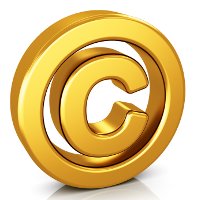 On July 5th, the European Parliament will vote on a draft of the Copyright Directive for the Digital Single Market that has major implications for the future of copyright law in the European Union and beyond. At the center of the debate is Article 13, a provision that would require online platforms that feature user-generated content to screen uploads for infringing material. It’s a measure that represents a significant update to standards of accountability in the digital age, and it’s one that’s now necessary to combat the continual devaluation of creative works and to ensure the survival of essential creative ecosystems.
On July 5th, the European Parliament will vote on a draft of the Copyright Directive for the Digital Single Market that has major implications for the future of copyright law in the European Union and beyond. At the center of the debate is Article 13, a provision that would require online platforms that feature user-generated content to screen uploads for infringing material. It’s a measure that represents a significant update to standards of accountability in the digital age, and it’s one that’s now necessary to combat the continual devaluation of creative works and to ensure the survival of essential creative ecosystems.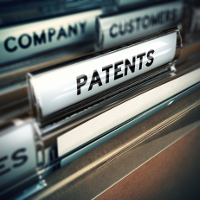 By
By  The Global Innovation Policy Center (GIPC) at the U.S. Chamber of Commerce has just released the sixth edition of its
The Global Innovation Policy Center (GIPC) at the U.S. Chamber of Commerce has just released the sixth edition of its 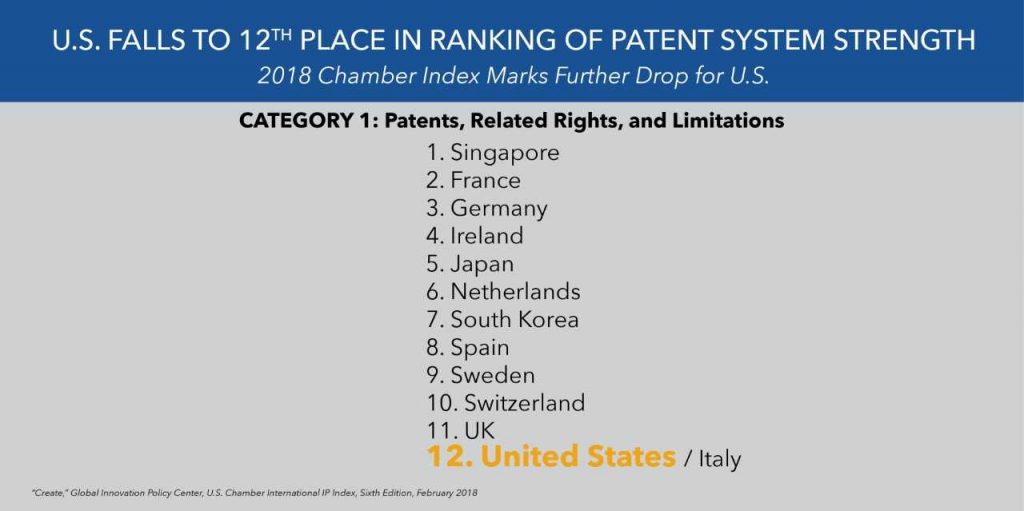
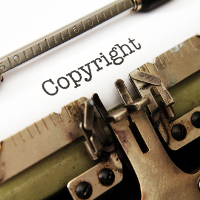 It’s been six weeks since the Copyright Alternative in Small Claims Enforcement (CASE) Act (
It’s been six weeks since the Copyright Alternative in Small Claims Enforcement (CASE) Act (